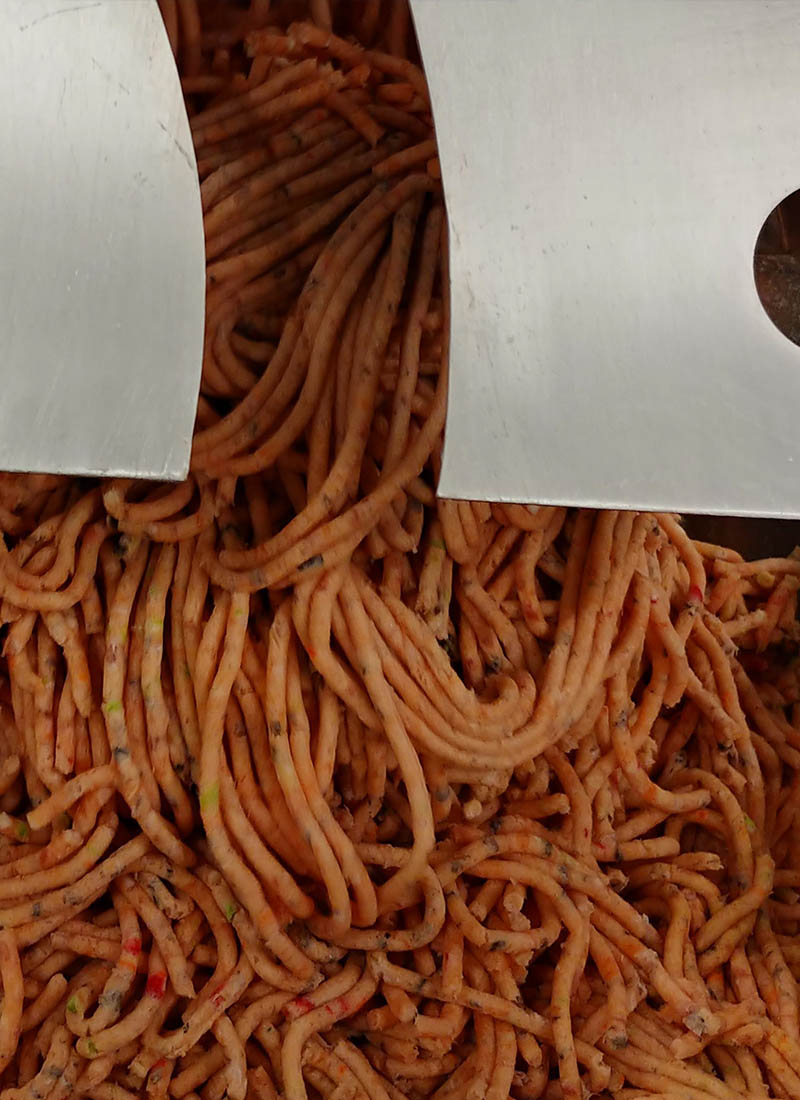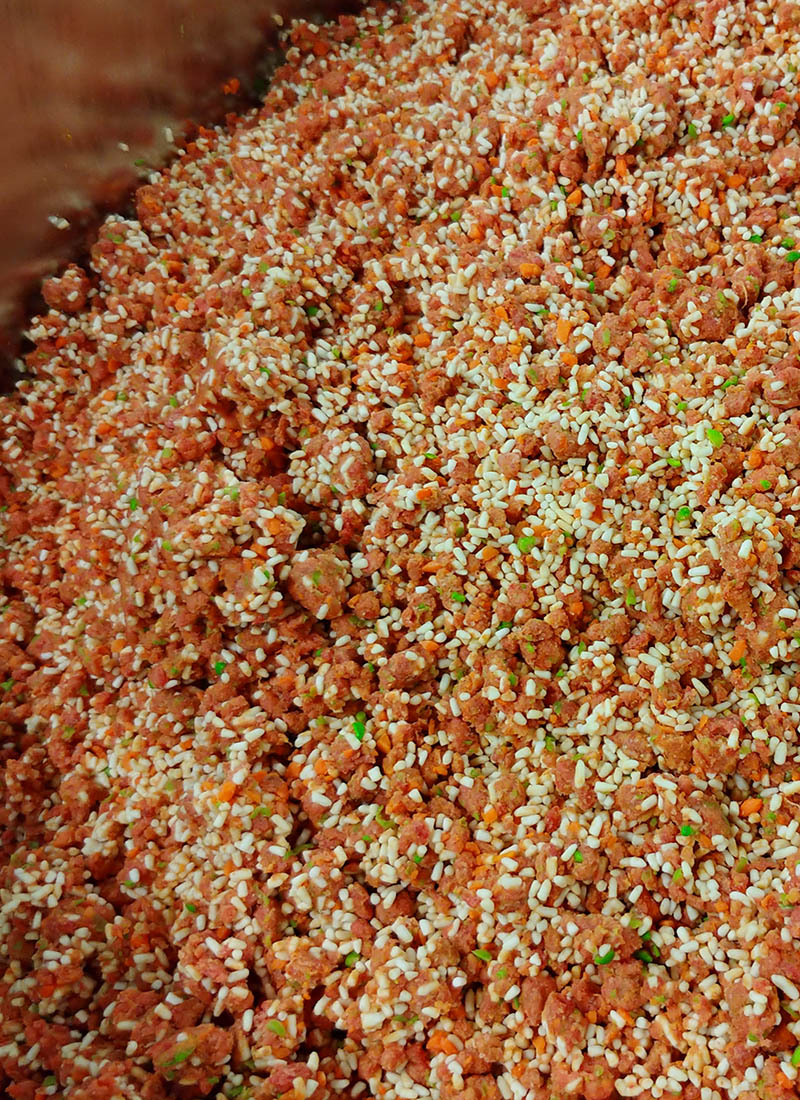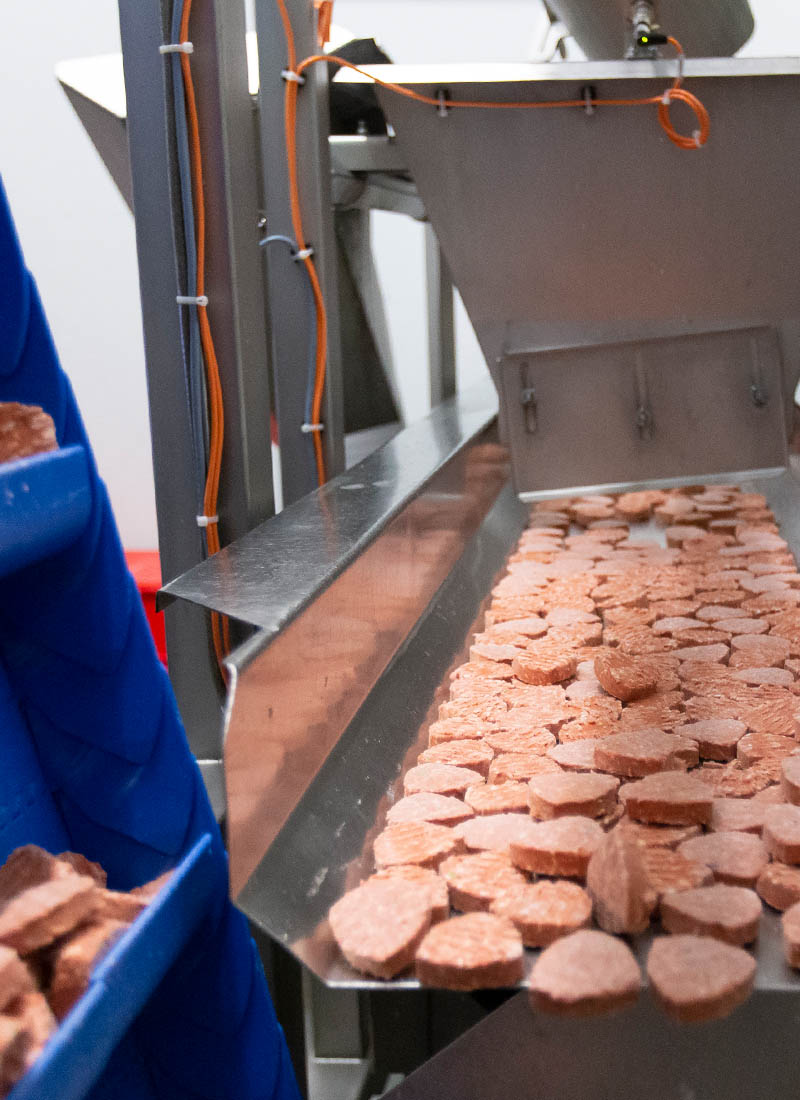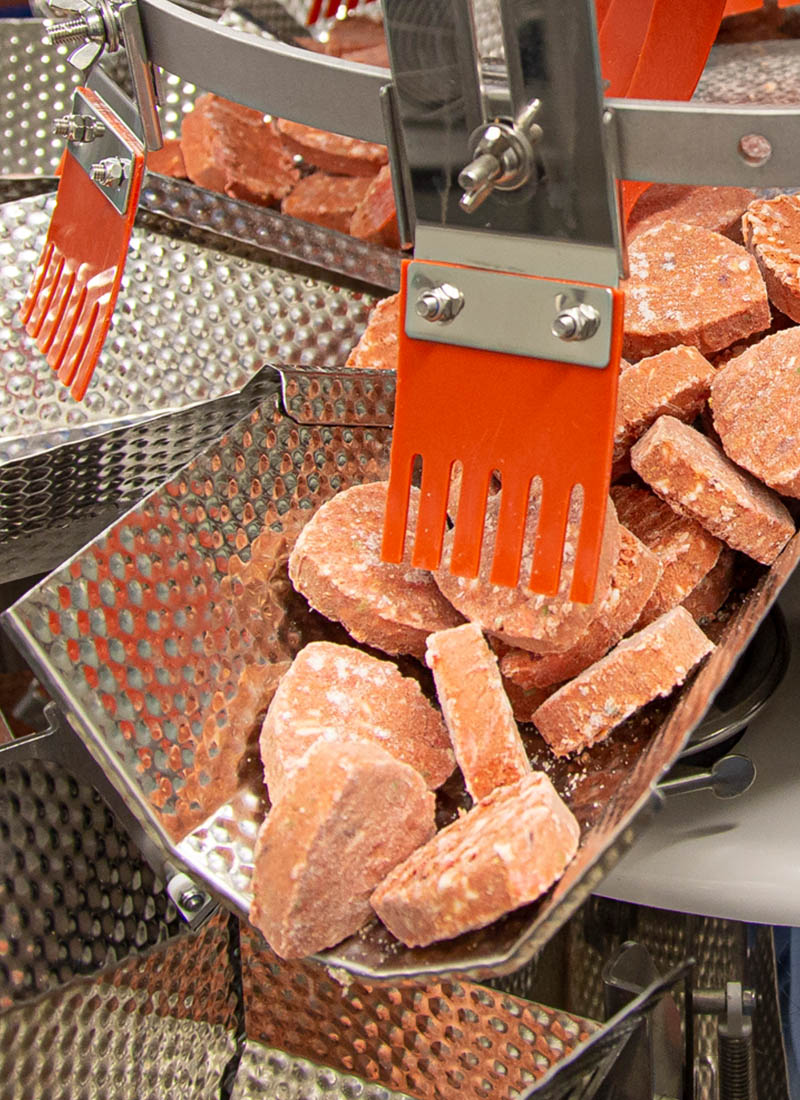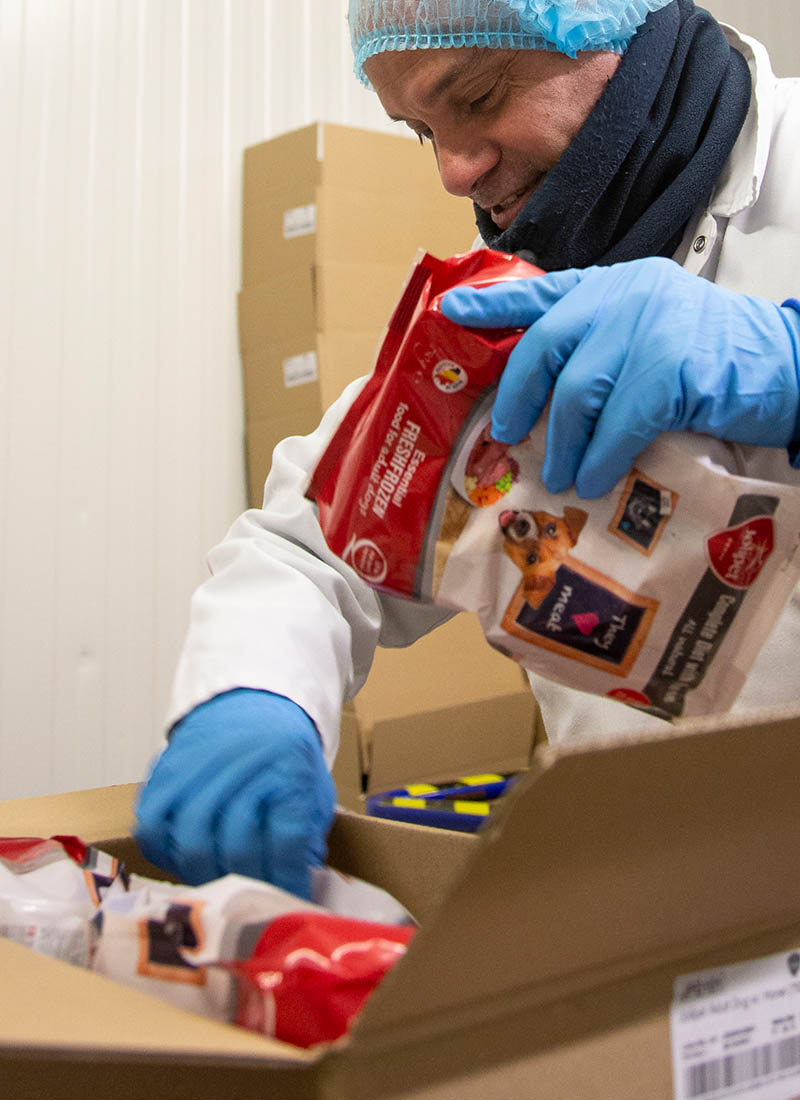Our kitchen
Simplicity and transparency
Customers who visit our factory are always amazed by the simplicity of the production process and its transparency. In the end, what we do is quite similar to cooking at home, but then without the heat. In essence, we assemble nutritious raw materials into a complete meal, which we then freeze at an accelerated pace without further processing, in order to preserve all of nature's goodies to the maximum.
From the preparation of raw materials to packaging takes only 1 hour. We also try to keep the number of raw materials in our recipes to a minimum, usually between 7 and 10: 2 to 4 pieces of meat, 1 carbohydrate source, 2 to 3 pieces of fruit or vegetables, 1 premix and 1 to 2 oils.
Everything is already contained in the raw materials we use. So why should we list 20 raw materials on our packaging? To compensate for the lack of quality of the basic raw materials? After all, we don't put 20 ingredients together when we cook for ourselves. Our four-legged friends do not need to do so either. Our motto is to start with healthy basic ingredients.
Quality raw materials
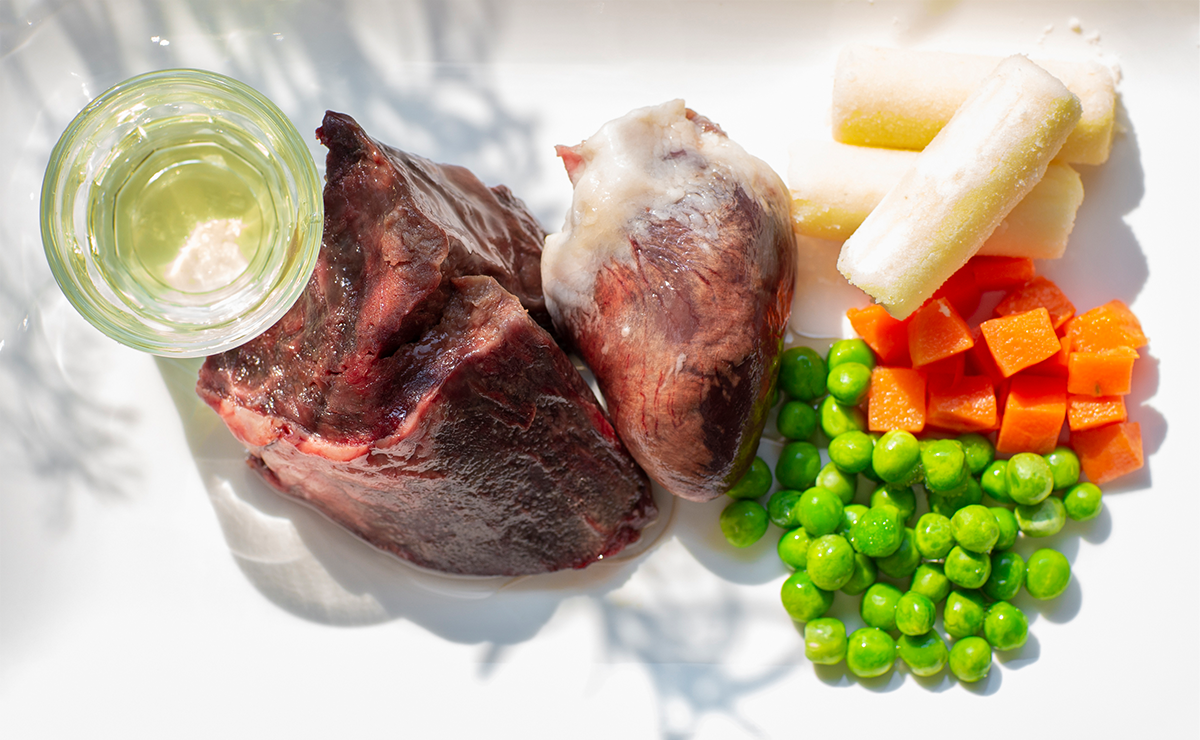
FreshFrozen for Pets is prepared by people who have been trained to work with real meat. When they prepare our food, they start with real muscle meat. Depending on the recipe, they add high-quality organs such as liver, tongue, lung, etc. In some recipes they add tripe. We try to source our animal raw materials locally, as much as possible.
Most of the meat we use is of humane quality until it has to leave for our factory. Then it becomes 'animal food'. Our butchers do not use low-grade offal (e.g. feet, feathers) or cheap fillers (e.g. corn, wheat).
Our butchers combine these animal by-products with one carbohydrate source (rice or potatoes) and fruit and vegetables, the same ones you and I buy in the supermarket. Among the most common fruits and vegetables we find the following:
- Blanched, bright orange carrots and fresh green peas, sources of raw fibre, natural minerals and vitamins
- Lightly steamed, healthy red beets, source of natural antioxidants
- Fresh, cleaned and seedless Jonagold and Golden Delicious apples
- Deep red Jonkheer-Van-Tets currants, source of natural vitamins and antioxidants
In our recipes, we do not use pea fibre to artificially increase the protein content, nor do we use dried varieties of fruit or vegetables (often in minimal quantities, in order to be able to claim that something is in them or not).
What you see is what you get.
Complete recipes
Finally, our butcher adds minerals and vitamins to make sure that those recipes which we claim are complete (Jolipet© and Wolf’s Menu ©) really are complete, i.e. in accordance with the FEDIAF and NRC guidelines.
We have different premixes that we can use, depending on the recipe and the target audience.
 At Jolipet© and Wolf's Menu© we use purified calcium as a source, not (chicken) bones. We are convinced that (chicken) bones can be dangerous, as they can lead to perforations of the oesophagus and/or the stomach and, more importantly, to an unbalanced absorption of the much-needed calcium. Especially in young dogs this can lead to problems.
At Jolipet© and Wolf's Menu© we use purified calcium as a source, not (chicken) bones. We are convinced that (chicken) bones can be dangerous, as they can lead to perforations of the oesophagus and/or the stomach and, more importantly, to an unbalanced absorption of the much-needed calcium. Especially in young dogs this can lead to problems.
The oils we add also play an important role. There are three different oils that we can use to achieve the optimum fatty acid balance in each of our diets. These three are: rapeseed oil (source of omega 3), corn oil (source of omega 6) and salmon oil (source of omega 3 and of EPA+DHA, essential for puppies and kittens). Each has its role to play and is incorporated into our FreshFrozen recipes where appropriate.
Feed Chain Alliance certified
 Jolipet© and Wolf's Menu© are prepared in the only factory in Belgium, and one of the few in Europe, that produces FreshFrozen food for pets with an FCA label.
Jolipet© and Wolf's Menu© are prepared in the only factory in Belgium, and one of the few in Europe, that produces FreshFrozen food for pets with an FCA label.
FCA stands for Feed Chain Alliance. It is a quality scheme whereby members undertake to purchase raw materials only from suppliers that are also FCA or have a certificate that enjoys similar international recognition.
In doing so, we comply with the strictest quality control requirements, from the selection of raw materials through production to the delivery of our products. So, a batch of expired raw materials that has been gathering dust in some warehouse for months cannot be used by us. Thank goodness for that.
Because we are convinced that your dog deserves the same quality food as you do - that is what our butchers go for, day in, day out.



